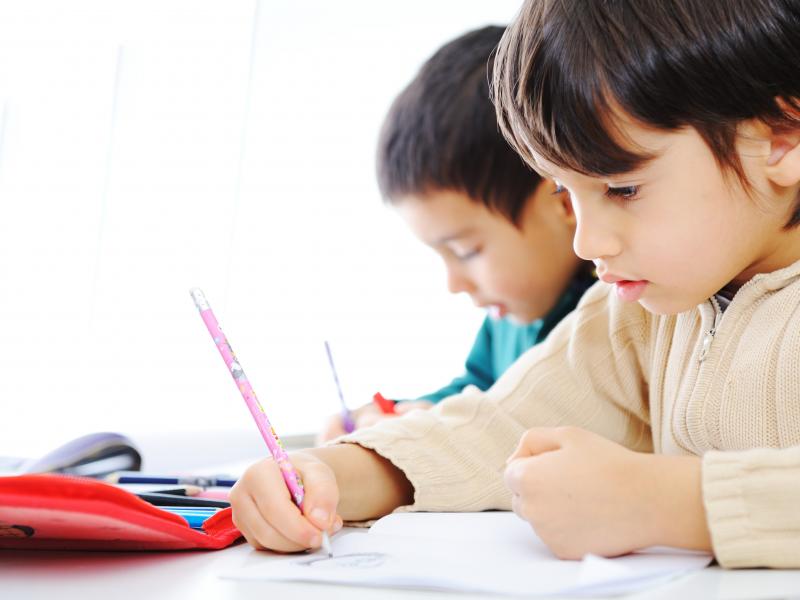Unlike speech, writing is a fundamental skills that children must develop with the foundations of speech, listening and reading. Young children have been proven to learn best through activities, such as play and imitation. Two components that guarantee a child's success are: supportive adults and interesting opportunities that encourage the children’s learning and imagination. The book, “30 Fun Ways to Learn About Writing” written by Ann Roberts, lists 30 persuasive and influential writing activities for early writing development.
3 Fun Persuasive Writing Activities for Kids
Wish You Were Here!
Sending and receiving postcards!
What you need:
- Address book with class addresses
- Boxes(optional)
- Mailbox
- Maps of your area, the country, and the world (optional)
- New blank postcards
- New picture postcards
- Pens, crayons, and felt-tip pens
- Stamps of the correct amount for a postcard ( 1 per child)
Learning Objectives:
Children will:
- Use language to imagine and recreate roles and experiences
- Attempt writing for various purposes
- Hold and use a pencil effectively to form recognizable letters.
What you do:
- Ask parents, children, and friends to collect unused postcards for you. Include local scenes, art cards, animals, and people. Talk about why and when we send postcards, and to whom we might send them.
- Talk about and model the kinds of things someone might want to write on a postcard.
- Suggest that the children make their own postcards by drawing pictures and writing on the blank cards.
- Go through your class list and pair up the children. Each child will write a postcard to the other child in the pair.
- Show the children how to use the class address book to find the address of their “postcard buddy.”
- Over the course of the next day or two, help the children write and address their postcards. When they are all finished, put a stamp on each one.
- Take a walk to the mailbox and drop them in.
- Encourage the children to send postcards back to the class when they go on vacation.
May I Take a Message?
Use a telephone with message pads and pens will make it more realistic.
What you need:
- Digital camera and printer
- Message pads and clipboards
- Pens and pencils
- Phone books and directories
- Phones ( wall mounted, desk, cordless, and cell)
- Sticky Notes
Learning Objectives:
Children will:
- Interact with others, negotiating plans and activities, and taking turns in conversations.
- Speak clearly and audibly with confidence and control.
- Attempt writing for various purposes.
- Hold and use a pencil effectively to form recognizable letters.
Before you start:
Remove batteries from cell phones and cordless phones, and remove any external wires from the traditional phones. Clean phones with antiseptic wipes or spray. Use a digital camera to take pictures of all the children and the teachers in the class. Print out the pictures and hang them on the wall.
What you do:
- Look at the different kinds of phones.
- Visit the school office or other offices to watch how people answer the phone and take messages. What kind of phones do they use in the office? What kinds of phones do the children have at home?
- Model answering the phone yourself. Take messages and make notes.
- Encourage the children to explore the phones before introducing more formal activities.
- Hang pictures of children, staff, and other adults on the wall, and hang clips underneath each for messages.
- Depending on the ages of your children, you might model looking up numbers in a phone book or directory. If you have older children and a classroom computer, you could demonstrate how to lookup a phone on the internet.
- Talk about how to leave a message and how to take a message. Help the children take phone messages.
Signs of Writing
Walk around in your neighborhood or town with your children looking for signs, take pictures of each sign.
What you need:
- Card stock cut in rectangles, hexagons, circles, and triangles
- Child-safe scissors
- Craft sticks
- Crayons
- Glube
- Markers
- Paint and paintbrushes
- Pencils and pens
- Photographs and other pictures of signs- for example, road signs, street signs, directions, etc.
- Toy people and vehicles
Learning Objectives:
Children will:
- Attempt writing for various purposes.
- Use talk to organize, sequence, and clarify thinking and ideas.
- Observe, find out about, and identify features of the neighborhood where they go to school.
- Read a range of familiar and common words.
What you do:
- With the children, take a walk in your neighborhood to look for constructions signs, traffic signs, and road signs.
- Talk about signs and notices that the children know, know, their purposes and meanings.
- Talk about the shapes and colors of different signs- for example, yellow triangles and hexagons.
- When you are back in the classroom, use toy people and vehicles to practice what happens when drivers and pedestrians see different signs.
- Encourage the children to make signs, with appropriate symbols and colors, to use with the toy people, and vehicles. Create situations such as ordinary driving, road work, police events, and accidents.

